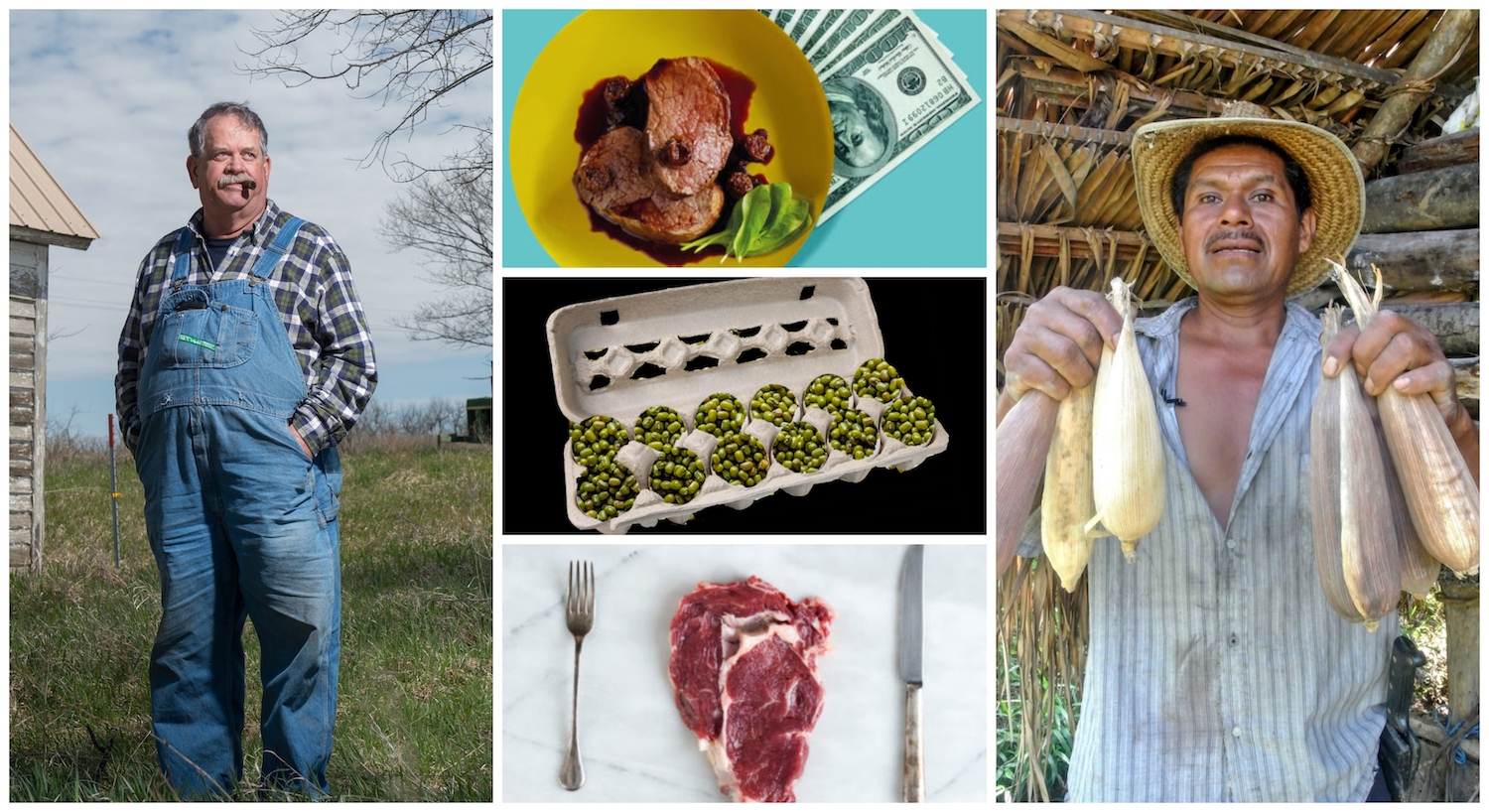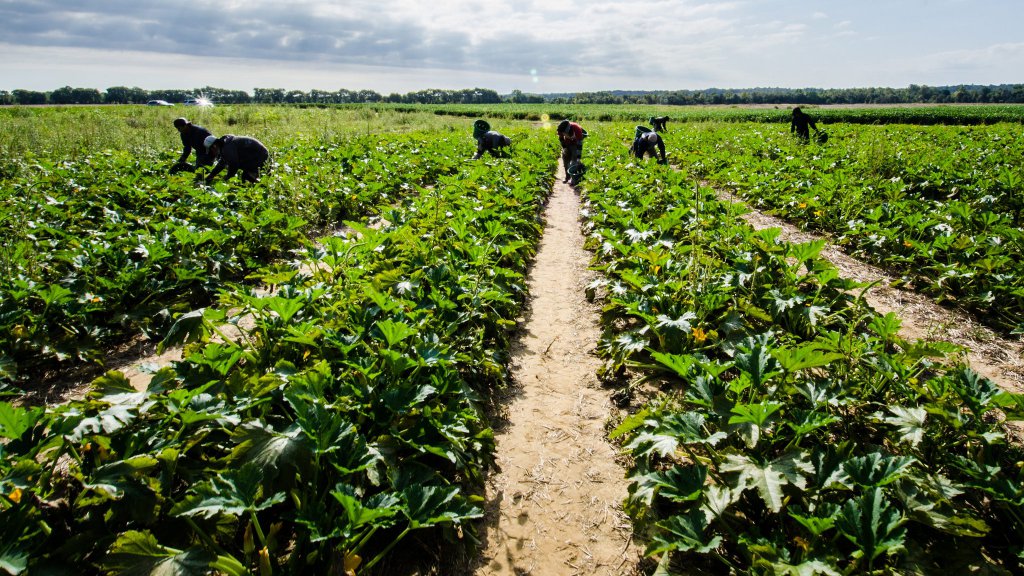
Dear Upton Sinclair, J.I. Rodale, Cesar Chavez, Rachel Carson,
Dear Frances Lappe, Agriculture Secretary Earl Butz, Wendell Berry, first Whole Foods store,
Dear Carlo Petrini, Alar scare, 1990 Nutrition Facts law,
Dear National Grange of the Order of Patrons of Husbandry,
We regret to inform you that we are unable to include you in our illustrated timeline of major food milestones. We chose from a pool of extremely qualified applicants, and it was an extremely hard decision! Though we wish we could feature everyone who has had a hand in shaping the new food economy, for better or for worse, that simply isn’t possible.
Here’s the thing with timelines: you have to draw the (ahem) line somewhere. Otherwise, you’ll end up going all the way back to the Bronze Age and the invention of fire. We decided to start at the beginning of this century, which ruled all of you out automatically. Yes, 2000 is a nice round number. But it’s not completely arbitrary either. 2000 was the year that cultural, regulatory, and technological changes started to build on one another, accelerating the rate of change and bringing what had been a fringe movement firmly into the mainstream.
So, even though you’re not here, consider our timeline an homage to the “old” new food economy. There wouldn’t have been an alternative without you.
With regrets,
Illustration by Ben Karis-Nix

2000
There are 2,863 farmers’ markets in the U.S.
Slow Food USA is founded in Brooklyn, NY. Founded in Italy in 1986 to protest the opening of a McDonald’s at the Spanish Steps in Rome, Slow Food went on to become an international grassroots organization devoted to the defense of local food traditions worldwide. Its national office is founded in Brooklyn.
National Organic Program (NOP) established. The Organic Foods Production Act of 1990 mandates that the USDA develop a set of national organic standards. The regulatory framework, known as the NOP, is published in the Federal Register on December 21, 2000.
2001
Eric Schlosser publishes Fast Food Nation. The first significant work of food journalism of the new millennium, Schlosser’s searing investigation sparks a growing suspicion of the American fast food industry and later loosely inspires Richard Linklater’s film of the same name.
2003
Yale Sustainable Food Project serves its first on-campus meal. The Yale Sustainable Food Project, a progenitor of the farm-to-institution movement, grows out of conversations famed chef Alice Waters had with Yale’s then-president, Richard Levin, in 2001. In addition to the campus garden and educational programming, the local, organic dining program, piloted at Berkeley College (one of the school’s 12 residential campuses) proves a university can feed its students without a one-size-fits-all food service provider.
2004
More than 30 countries ban U.S. beef imports. On December 23, 2003, a slaughtered cow in Washington State tests positive for bovine spongiform encephalopathy, or “mad cow disease.” Dozens of countries quickly move to ban U.S. product. Back home, it’s a marketing opportunity for producers of organic beef and milk, who see a rise in sales.
2005
Safeway launches “O Organics.” Giant grocery chains increase their ‘clean-label’ offerings by establishing their own house brands. One noteworthy example: In Safeway’s words, “a new line of over 300 certified organic products available in almost every aisle of the grocery store.”
2006
Michael Pollan publishes The Omnivore’s Dilemma.
South Central Farm eviction. After an unannounced sale, the City of Los Angeles forcibly evicts farmers from the South Central Farm—then the nation’s largest urban garden, located in a low-income, largely industrial neighborhood with little access to freshly-grown produce. The proceedings draw support from high-profile celebrity advocates and over 40 protesters are arrested, sparking a national debate about hunger, food access, and urban land tenure. Today, the four-acre plot remains vacant.
2007
“Locavore” is New Oxford English Dictionary’s “Word of the Year.” “The past year saw the popularization of a trend in using locally grown ingredients,” Oxford wrote in a blog post. (Runners up: “upcycling” and “colony collapse disorder.”)
2008
Californians approve Proposition 2. The state ballot measure, also known as “Standards for Confining Farm Animals,” appears on California ballots on November 4, 2008. It creates a new statute prohibiting confinement of farm animals in a way that would prevent them from standing up, lying down, turning around or extending their limbs. On February 4, 2015, the Ninth Circuit Court of Appeals upholds the constitutionality of Proposition 2, after opponents claim it does not specify exact housing dimensions for chickens and therefore should not be implemented.
New York City enacts calorie-labeling law. In 2006, the New York City Board of Health hands down a first-of-its-kind decision: chain restaurants with 15 or more locations list the calorie counts of menu items near point of purchase, where customers can see them. The decision becomes official in 2008. Just two years later, Congress passes a similar federal law.
2009
U.S. debut of Robert Kenner’s documentary Food, Inc. Kenner, an award-winning screenwriter, producer and director, partners with Eric Schlosser as co-producer and Michael Pollan as consultant, to produce and direct this Oscar-nominated documentary about the power of corporate profits over consumer health in the American food system.
Michelle Obama plants vegetable garden on White House South Lawn. With the help of local school children, the First Lady breaks ground on an organic kitchen garden on March 20, 2009. It’s the first in a series of health and nutrition initiatives FLOTUS undertakes to target childhood obesity, better school lunches and increased activity for young Americans.
2010
U.S. farmers’ markets more than double to 6,132.
2011
Coalition for Immokalee Workers launches Fair Food Program. The CIW, a human rights organization, launches a program to reduce worker abuse and wage exploitation in the tomato supply chain.Its efforts are helped when Barry Estabrook’s bestselling book Tomatoland, an investigative work on the state of Florida’s tomato industry, brings nationwide attention to the issue the following year. CIW enlists major buyers to pay an extra penny per pound to farmworkers; by 2014, participants include Taco Bell, Subway, Whole Foods, and Walmart.
New York Times columnist Mark Bittman popularizes the term “ag-gag.” In the early aughts, a wave of state legislatures start to criminalize on-farm whistleblowing, a response to the undercover investigations of animal welfare advocacy groups like PETA and the Humane Society. The laws punish any form of unauthorized documentation, including film and photography, with fines and jail time. Bittman’s use of the term in an op-ed fuels the backlash. Many ag-gag laws have since been repealed or defeated, but as of March 2016, at least six states still enforce them.
Food Safety Modernization Act (FSMA) enacted. FSMA, signed into law on January 4, 2011, is the largest food safety reform bill in more than seven decades. It allows FDA to order mandatory food recalls and marks a dramatic shift in safety regulations. The first mandatory compliance deadlines are scheduled for August of 2016.
2012
Hundreds of fast food workers strike in New York City. On November 29, 2012, a coalition of workers launches a strike for better wages and working conditions. The movement gains momentum nationwide and achieves huge success in New York City, where a phase-in of a $15 minimum wage for fast food workers begins on December 31, 2015.
The “pink slime” panic. In March 2012, ABC News releases an 11-segment series of reports on “pink slime,” a ground beef additive. Also known as “lean finely textured beef,” the product is made by heating beef trimmings and removing the fat using a centrifuge. At the time, an estimated 70 percent of U.S. ground beef contained it. That number decreases to 5 percent as a result of widespread consumer outrage by March of the following year.
2013
Meanwhile, China buys Smithfield Foods, America’s biggest pork producer. While the new food economy flourishes, corporate mergers and acquisitions continue to consolidate ownership of Big Food. One major example: Shuanghui International Holdings Limited buys U.S. company Smithfield Foods Inc. for $4.7 billion. Smithfield is the world’s largest pork producer and processor, and China produces–and consumes–more pork than any other nation.
2014
Michael Moss publishes Salt, Sugar, Fat. Moss’ work is an exposé of the marketing and product development tactics that processed food companies use to hook consumers. The book marks the first time consumers get a glimpse into the science behind tweaking the proportions of salt, sugar, and fat to addict us to eating junk food.
General Mills purchases Annie’s Homegrown. This $820-million acquisition is just one example of Big Food’s scramble to adapt to changing consumer preferences. Before and since then, scores of other “natural” or organic brands are acquired by larger food companies.
Vermont passes nation’s first GMO labeling law. The law, which is the first of its kind in U.S., requires that products containing genetically modified ingredients are labeled as such. Subsequent efforts to prevent nationwide reform stall in the Senate.
New York Times’ “Dining” section becomes, simply, “Food”. The newspaper of record’s hallowed restaurant reviews, recipes and advice remain unchanged, but the section is now named to reflect broader coverage of trends and innovation. In a brief written statement issued on November 11, 2014, national editor Sam Sifton writes, “The new name looks forward, to coverage that extends beyond the dining room.”
2015
Chipotle outbreaks. Multiple outbreaks of E.coli, salmonella, and norovirus between August and February 2016 force Chipotle to reassess its supply chain and food safety procedures. The company loses $6 billion in market value and shutters all stores for a day to retrain employees in food safety best practices.
Country of Origin Labeling (COOL) meat laws repealed. The COOL laws, originally passed in January 2009 and May 2013, required meat labels to state where the animal was born, where it was raised, and where it was slaughtered. Congress repeals the bill by a 300-131 vote, allowing foreign companies to more easily compete with domestic pork and beef producers.
Peanut Corporation of America CEO sentenced to 28 years in prison. A deadly salmonella outbreak which killed nine people and sickened more than 700 others is traced back to the Peanut Corporation of America. CEO Stewart Parnell is sentenced to 28 years in prison. This marks the first time a corporate executive is convicted on federal felony charges for food poisoning.
McDonald’s pledges to go antibiotic and cage-free. McDonald’s announces a campaign to use only antibiotic-free chicken by 2017 and eggs laid by cage-free hens by 2025. (As The Guardian points out, the company made made a similar, unfulfilled promise about antibiotics in 2003.)
2016
Equity crowdfunding rules go into effect. The 2012 JOBS Act includes a mandate that the SEC adopt rules permitting small businesses to offer and sell equity through crowdfunding. The proposed Title III rules under the JOBS Act rules mean that for the first time in 80 years, “emerging growth companies” (those with under $1 million in revenue) can sell shares to investors whose net worth is also under $1 million. The rules become final in May 2016.
FDA announces Added Sugars label requirement. The new Nutrition Facts label will be required on most packaged foods by 2018. The updated label includes a larger print type on the number of calories, revised serving sizes and nutrient requirements, and the addition of a category called ‘added sugars’ which helps to differentiate the natural sugars of a product from additional sugar content. It will also assign a percent daily value to added sugar for the first time.








